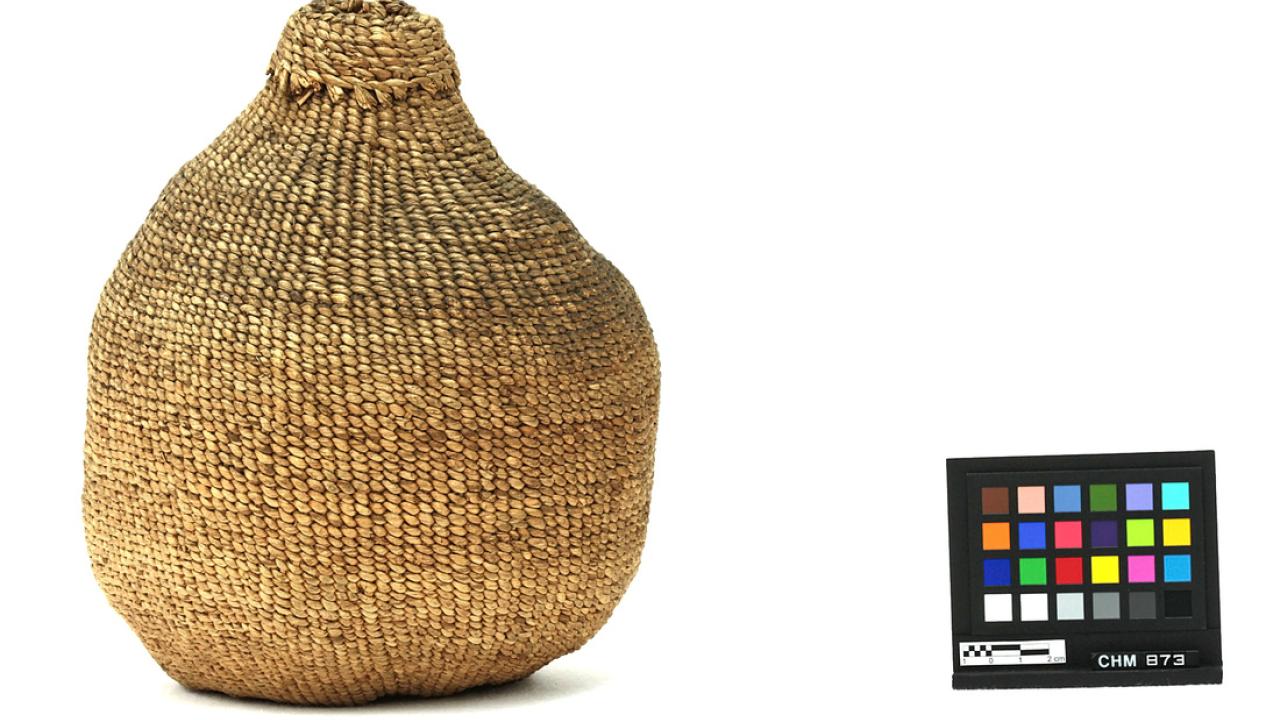
July 16, 2015: Tachi Yokuts Waterbottle
Tulare Lake, California
Basket purchased June 5, 1903 by Clinton Hart Merriam
Diameter: 195 mm; Height: 250 mm
Clinton Hart Merriam describes this basket as:
“Ah’ts (or Ah’ch) Waterbottle
Purchased by me from an old Tahche [woman] living in a tule hut, at the remains of a Tahche settlement 7 miles southeast of Lemoore, near Tulare Lake, California. June 5, 1903.”
The Tachi Yokuts of the southern San Joaquin Valley are known for their twined basketry, made from local plants such as hazel and willow (for warps) as well as sedge root, conifer root, redbud and brakenfern (for wefts). The wetlands of the valley floor also provided abundant tule, which was used for both warps and wefts in Valley Yokuts basketry, and is seen here in this waterbottle.
Though made of tule, the warps of this basket are not loose and flexible like the basketry of the Klamath and Modoc of northern California, and the basket maintains its rigidity. While up-to-the right slant of weft twist is more common among the Foothills Yokuts, down-to-the-right slant of weft is commonly observed among the Tachi and other Valley Yokuts, as seen here.
Waterbottles were either soaked in water to cause the tule to swell, so as to make the basket water-tight, or covered with pine pitch to prevent the leaking of water. Unpitched waterbottles like this one were also sometimes used to hold seeds.
Though the Yokuts had both elaborate coiling and twining traditions, twining was particularly important, especially among the tribes around Tulare Lake, who may not have adopted coiling until later. Coiled baskets were traded from the foothills, however, in exchange for tule mats. String baskets, a style different to both coiling and twining, were also made by the Valley Yokuts.
Like other California cultures, basketry among the Tachi was a vital technology that could be used for a wide array of purposes, even holding water. While some pottery technology was known to and made by the Valley Yokuts, it was not as widespread or important as basketry. Even in the pottery of the Valley Yokuts, you can find the impressions of the baskets used to hold the clay vessels.